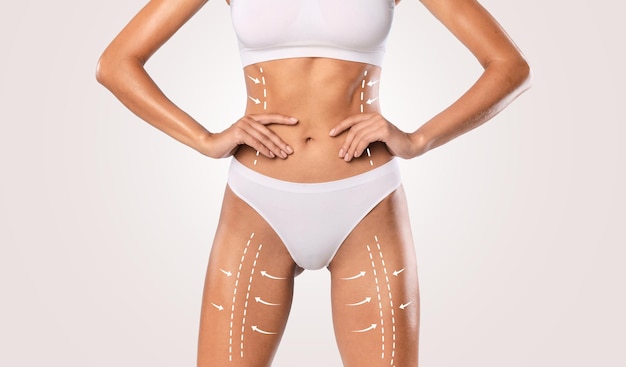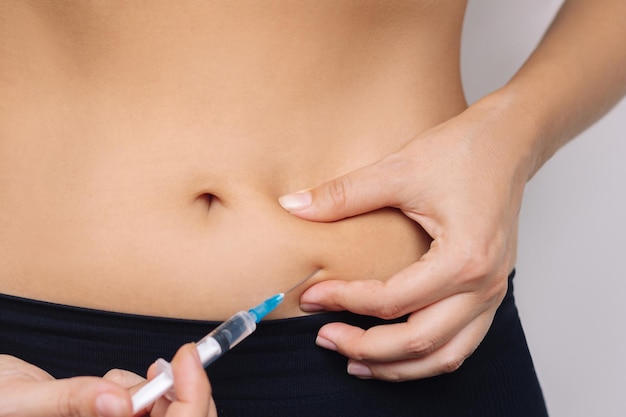What is the recovery time of liposuction?

Liposuction is a popular cosmetic procedure aimed at removing excess fat from specific areas of the body to improve body contours. While Liposuction in Dubai, offers many benefits, one of the most common questions patients have is about recovery time. Understanding what to expect during the recovery phase is crucial for managing expectations and ensuring a smooth healing process.
What is Liposuction?
Liposuction is a surgical procedure designed to remove localized fat deposits that are resistant to diet and exercise. The procedure involves making small incisions in the skin, through which a cannula (a thin tube) is inserted to break up and suction out fat. This results in a more sculpted and contoured appearance, particularly in areas like the abdomen, thighs, arms, and chin.
Types of Liposuction Procedures
Doctors may recommend different types of liposuction techniques based on the patient's needs. Some of the most common techniques include traditional liposuction, laser-assisted liposuction, and ultrasound-assisted liposuction. Each method aims to remove excess fat while minimizing damage to surrounding tissue, allowing for smoother results and a faster recovery.
What to Expect During the Liposuction Recovery Process?
Recovery from liposuction varies depending on the extent of the procedure and the areas treated. Most patients can return to light activities within a few days, but it typically takes several weeks for the body to heal completely. During recovery, swelling, bruising, and some discomfort are common but usually subside over time.
First Week After Liposuction
In the first week following liposuction, patients are generally advised to rest and limit physical activity. Swelling and bruising may peak during this time, and some patients experience mild discomfort or tightness. Compression garments are often recommended to help reduce swelling and support the newly contoured areas. Most people can return to work or daily activities after a few days, but strenuous exercise should be avoided.
Two to Four Weeks After Liposuction
By the second to fourth week, swelling and bruising should start to diminish, and most patients begin to feel more comfortable. However, it’s essential to continue wearing compression garments as prescribed by the doctor. Patients may gradually resume light exercise during this period, but intense workouts should be avoided until the doctor gives approval.
Three to Six Months After Liposuction
Full recovery from liposuction can take several months. While the final results are typically visible within a few weeks, the healing process continues as the body adjusts to the changes. Swelling may continue to subside during this period, and any residual tightness or discomfort should resolve. The results of liposuction are generally long-lasting, as the fat cells removed do not regenerate.
Benefits:
Enhanced Body Contours
Liposuction helps remove stubborn fat deposits, improving the body’s shape and contour. It is particularly beneficial for areas that are resistant to diet and exercise.
Increased Self-Confidence
With improved body contours, many patients experience a boost in self-esteem and confidence, especially when they see noticeable improvements in their appearance.
Long-Lasting Results
Once fat cells are removed during liposuction, they do not regenerate. Therefore, the results are typically permanent as long as patients maintain a healthy lifestyle and weight.
Minimal Scarring
Liposuction involves small incisions, which typically result in minimal scarring. The incisions are usually hidden in natural folds or creases of the body, making them less noticeable.
Targeted Fat Removal
Liposuction offers the advantage of targeted fat removal. It is ideal for individuals looking to contour specific areas, such as the abdomen, thighs, or chin, that do not respond to other weight loss methods.
FAQs:
How long does it take to recover from liposuction?
Recovery from liposuction can take from a few weeks to several months, depending on the extent of the procedure and individual healing rates.
When can I return to work after liposuction?
Most patients can return to work within a few days to a week, depending on the nature of their job and the extent of the procedure.
Is liposuction painful after the surgery?
Mild pain and discomfort are common after liposuction, but these symptoms usually subside within a few days. Compression garments can help reduce discomfort.
Can I exercise after liposuction?
Exercise should be avoided for at least 3 to 4 weeks after liposuction. Strenuous physical activity can be resumed once the doctor clears you.
Will I need follow-up appointments after liposuction?
Yes, follow-up appointments are essential to monitor healing and ensure optimal results. Your doctor will guide you on post-surgery care during these visits.
Conclusion:
Liposuction offers significant benefits for body contouring, but understanding the recovery time is crucial for successful healing. While recovery can take several weeks to months, most patients experience a noticeable improvement in body shape and confidence once fully healed. It is important to follow the doctor’s post-surgery instructions to ensure a smooth recovery and long-lasting results. With proper care and patience, liposuction can provide lasting improvements to body contours.
Note: IndiBlogHub features both user-submitted and editorial content. We do not verify third-party contributions. Read our Disclaimer and Privacy Policyfor details.







